Can Spring Be Far Behind?
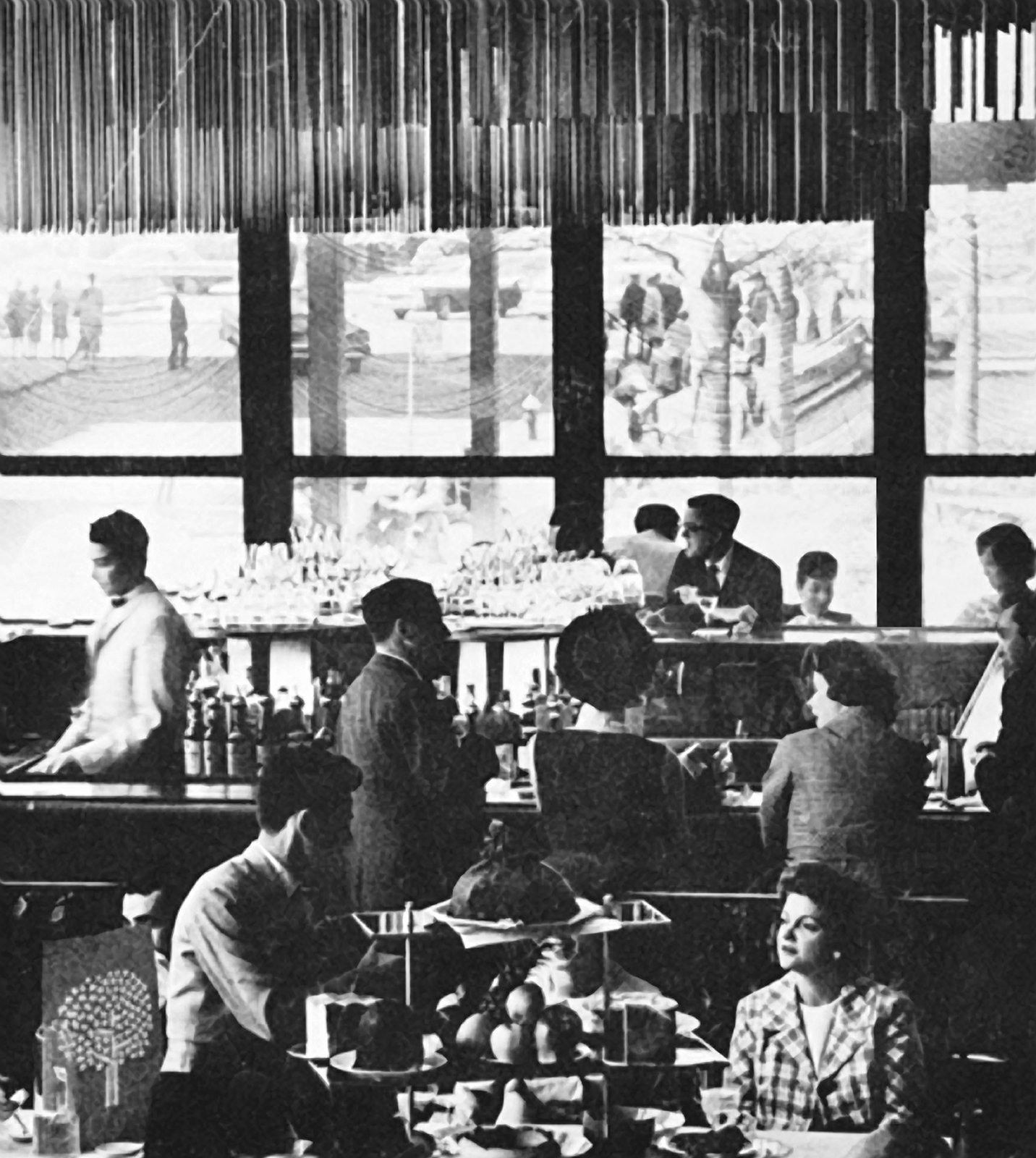
The Bar Room
The learned astronomers charted the arrival of winter at 7:44 p.m. on December 21, with the sun playing off the earth’s chillest tilt. Fine for the rest of the hemisphere. But New York’s winter has already unfurled precociously at twilight on December 15 behind a hedge of poinsettias in the southwest corner of the Seagram Building as “Winter came to rule the varied year” at the Four Seasons.
A fatalist with a well-thumbed Bartlett’s edits the 12-page “Winter Is Here” countdown procedure manual hot off the Xerox to energize the Four Seasons’ psyche. With poetry:
I, love to see when leaves depart
The clear anatomy arrive,
WINTER, the paragon of art,
That kills all forms of life and feeling
Save what is pure and will survive.

The Pool Room
Pure is scarcely the point at the Four Seasons. Indeed the wild flights of the menu panic purists, especially provincials too recently converted to the classic French idiom. For the Four Seasons is utterly New York. It was conceived in a Restaurant Associates test tube without the usual fine French chromosomes – not as a metaphor, but as a straight statement, unique in its own style. Naturally there had to be a gimmick. Costumes, accessories, flora and fauna would change with the season. Four stylized trees would be the graphic symbol: peach-blossomed in spring, leafy green in summer, aflame in autumn, stripped brown in winter. Cummerbunds, matchbooks, cocktail napkins, even cloakroom checks, service plates, page-boy uniforms -- the whole magnificent megillah -- changing with the seasons.
The Four Seasons opened in July, 1959. It was that year’s restaurant. It might have paled drearily into last year’s restaurant; instead it has ripened and mellowed with age. It is the longest running theatrical production on or off Broadway; a fantasy New York; New York reflected in stainless steel. Intimidating, coldly elegant, extravagant, exciting, contemporary, stark, mannered, art for the sake of show, show for the sake of money, rife with throwaway luxe (imagine fluting a mushroom destined for imminent slicing). Like New York the city, it can be conquered. Some days the soaring canyon of steel-and marble-delineated space seems almost cozy. And though the city rots, this most New York of restaurants never unlaxes. The service is crisply Fred Astaire. The big production numbers – watch the raw mushroom-salad-tossing number – remain sharp. Admitted, the service plates are disgracefully shabby. But the evening I spied a cockroach scuttling across the illuminated table plan at the pool room entrance, I felt neither threatened nor appalled nor even mildly offended. I found that cockroach curiously reassuring. This was New York and we both belonged.
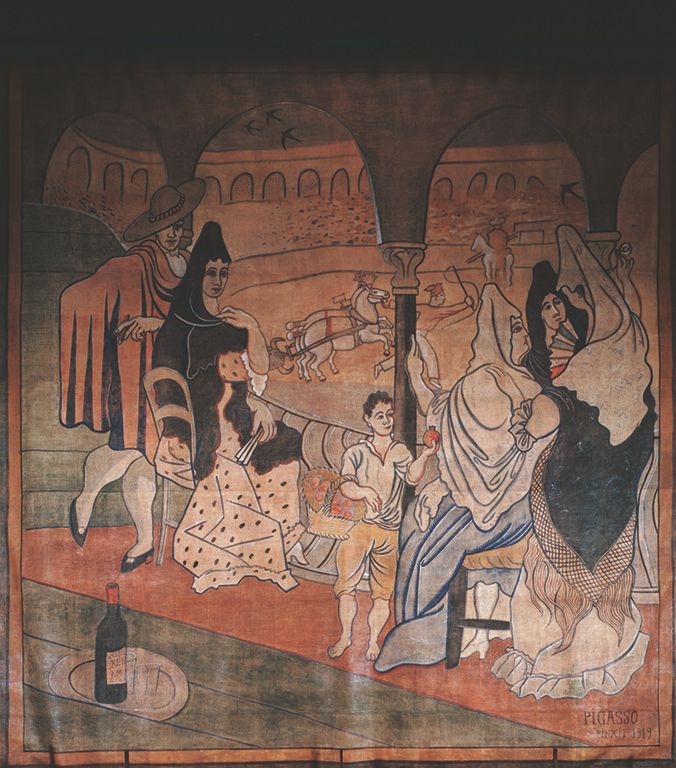
Picasso
James Beard doctors menus. The Big Daddy of Manhattan’s incestuous and fratricidal Food Establishment, staff guru in the Four Seasons’ infancy, is now a friend and sounding board and a guest for lunch with Four Seasons director Paul Kovi. It seems to me somehow highly fitting that Kovi and his predecessor, George Lang – now an R.A. vice-president – are both Hungarian.
“How is a Hungarian dwarf different from any other dwarf?” George Lang asks. “A Hungarian dwarf is bigger.”
Kovi is not only Hungarian, he is Transylvanian, a graduate of the University of Transylvania, where he would like you to believe, he majored in witchcraft. He played soccer and ran the Piccolo Budapest in Rome. He is trim, graying and handsome as an old-time movie star; if he does not wear a velvet cape, he should. His idea of salami is 60 per cent pork 40 per cent donkey, in the Hungarian tradition. “A personal preference.” He smiles silkily. “Donkey salami is not served in the Four Seasons.”
There is a new goose from Milwaukee which Kovi wants Sir James to taste (“The chef wants to do a cassoulet”) and a wheel of cheddar created by Washington State College. “We used to fly in the most beautiful nubbins of carrot from Oregon,” Beard reminisces over oysters and chipolatas (a union fancied in Bordeaux; the hot little sausages revive the palate between oysters).
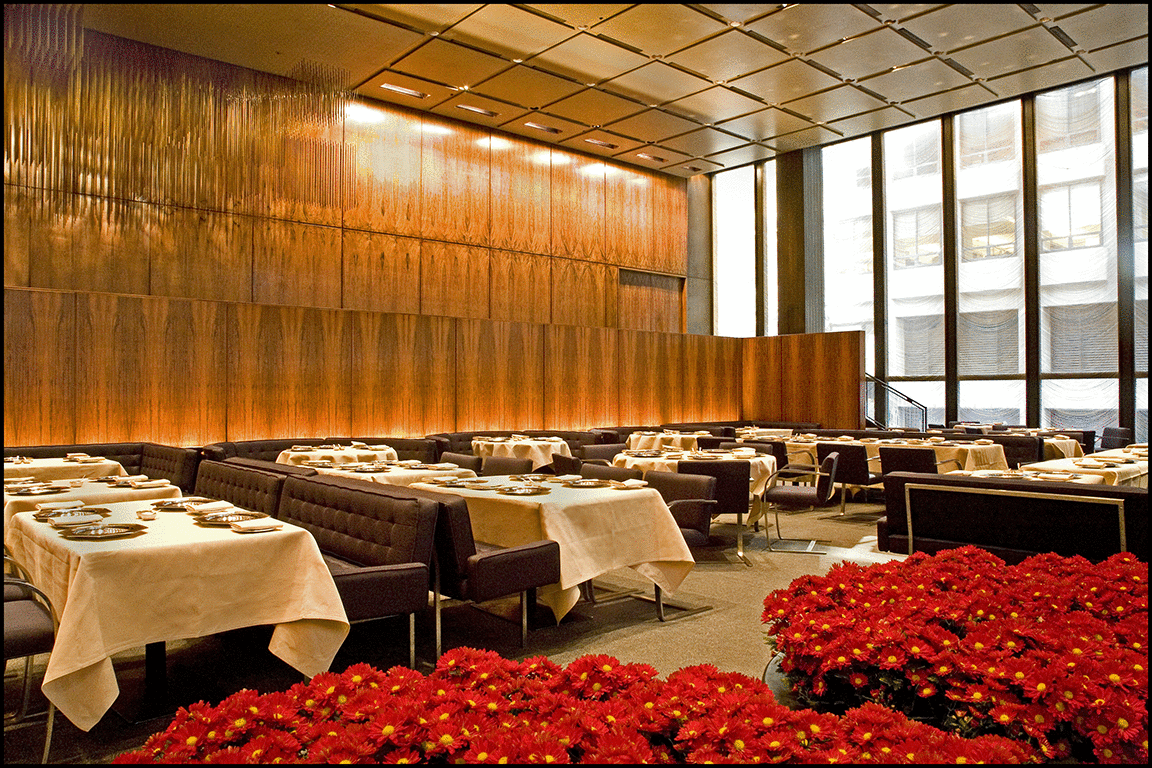 The Grill Room
The Grill Room Kovi diets. “Hungarians are used to suffering.”
Now to winterize the menu. Kovi begins. Sir James champions Maryland crabmeat cakes. “Fantastic,” Kovi agrees. The chef, Maurice Chantreau, a recent arrival from the Auvergne, reels at the indignities suffered by his beloved Escoffier. “The prosciutto must be sliced thinner,” Beard urges
“What about the cèpes?” the chef asks.
“Bloomingdale’s sells excellent cèpes in a can,” Beard reports.
“Order cèpes from Bloomingdale’s,” Kovi instructs his front-room man, Arthur De Cuir. Wild-boar pâté is rejected. Beard suggests the pâté de canard au orange, as done by the chef at Baumanière
“I hear about that one,” the chef allows. Kovi wants to improvise on the vegetable potage. Not only vegetables must change with the season, but also the shape...cubes, julienne, et cetera. The chef blinks. Dazzled.
The buerre blanc must be cooked fresh each time, Beard cautions. “Otherwise it is execrable and the captains seem to be stewing the crabmeat Casanova.” Arthur schedules a lesson in crabmeat Casanova. Also a refresher course in beef Stroganoff. Beard suggests flaming the venison cutlets in gin.
“The captains will love it,” Arthur agrees.
“Why not wrap the noisettes of lamb around marrow bones?” Beard ventures
“It sounds fascinating,” Kovi cries. The mere mention of larded pigeon with candied figs brings a snorted “ho ho” from the chef. “And remember,” Kovi warns. “Pas de garlic.” Beard shakes his head sadly.
“It is on my board,” Chef Chantreau says. “No garlic in the Four Seasons.”
“We are contemporary. We are tailored. We are classic,”says Kovi
“You are cutting yourself off from one of the great joys in life,” Beard moans.
The pool room is a magnificent setting for great celebrations. The bar room is dark, ideal for advancing great expectations. I love the Four Seasons although I have never had a great meal there. The menu is a high...promising rare sensual delight, a sampler of the classic and the unholy. Ham mousse inside a fresh peach in summer. Spring’s morels stuffed with a mousse of pike in a port sauce. The sudden sweetness of a peeled grape in a fine strong autumn consommé. Crisp, batter-dipped shrimp with mustard fruits ($3.75), a long time favorite. Now for winter: Coriander prosciutto with pineapple ($3.25). Zucchini and hearts of palm vinaigrette ($1.50). The field greens are selected daily, the breads home baked – tiny loaves of whole wheat, miniature croissants (sampled at lunch recently, they were still hot from the oven) – and vegetables never seen anywhere else: fiddlehead ferns, mange-touts (snow peas), steamed crisp and green. Perfect vegetables, imaginatively enhanced: squash with sautéed walnuts or lemon butter, Brussels sprouts and bacon cracklings.
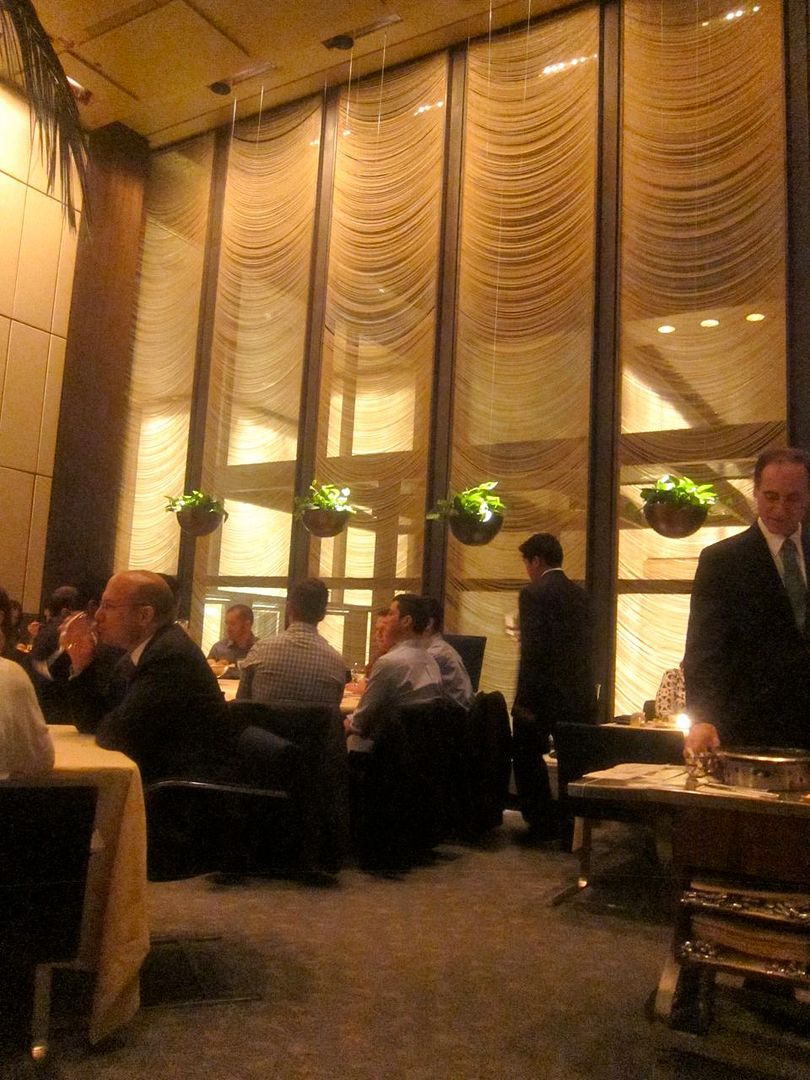
Dining Room in Action
The desserts are spectacular...the dazzling choice will panic the coolest sugarhead: cakes frosted in fabriclike folds of chocolate, crêpes stuffed with a rainbow of crème pâtissière, pomegranate sherbet, tangerine ice, a candied chestnut confection, zabaglione studded with buts of macaroon...and that Four Seasons touch: even the peach on the fruit tart is home-poached.
How disappointing then, when the striped bass is overcooked or a crabmeat crêpe is ethereal one day and gummy a few weeks later...when a plate of the most spectacular fresh seafood is bathed in a dreary bland cocktail sauce or the salad of turkey breast and avocado materializes as skimpy and dry as in a little old ladies’ tearoom. Snails without garlic are carrying the Four Seasons style too far for my palate. And it doesn’t matter what shape you cut your vegetables in, if the potage is as anemic as it was one day recently – the last autumn limping into winter, perhaps. Somehow the raw mushroom salad Malabar, with minced radish and celery and peppery lemon dressing ($2.25), a nutty frozen soufflé praline ($2.50) and real espresso (85 cents) in a covered cup dims the disappointment. I always return. I am willing to try. And the Four Seasons will never cease to experiment.
The winterizing of the menu lurches on feverishly. Kovi is riding a purée high. “We’ll try a different purée every day,” he announces. “For luncheon, a purée is imperative.” And the squash. No more disk cuts...it shall be sliced in graceful fingers, served in asparagus plates. “It is much more, so to speak...stylish,” Kovi notes. For January Kovi wants to experiment with boiled meats. “I’m fascinated with boiled things. A bollito misto, Chef. A little chicken, a little tongue, stuffed oxtails.”
“Stuffed oxtails...I know the stuffed veal breast, but stuffed oxtails...”
“We shall have to take the chef to lunch one Saturday at Quo Vadis, Sir James,” says Kovi.
“I can cook Italian,” the chef mutters. “I can make the stuffed macaroni. Stuffed oxtail?”
“It isn’t easy to bone them,” Kovi concedes. “But I can bone them.”
Chef snorts. “If you can bone them, I can bone them.”
Perhaps it is the preoccupation with style that sometimes sabotages the excellence of what is served. The house has a rigid sense of identity. A certain blandness of seasoning and abandon in the direction of sweet may be unnecessary caution, or it may be realistic appraisal of the patrons’ preference. Even the smashingly theatrical style of service - never hiamish or cute or condescending, but deftly tailored – has some minor drawbacks. Tableside cooking takes time and is imprecise. A harassed captain may not ad-lib his spice palette with proper restraint or consistency. One lunchtime recently I stewed for fifteen minutes, waiting to order while my captain sautéed, flamed, sauced and served an assortment of viands for the gentleman at the next table. At another lunch I foolishly let go of the ordering reins...”I’ll give you a bit of each vegetable”, the captain enthused...and three ladies wound up with six plates of vegetables, an $8.50 wallop on the bill. Still the tableside choreography is beautiful.
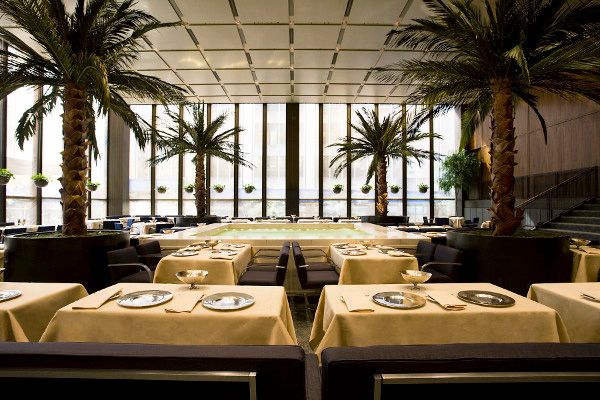
The Pool Room
An evening at the Four Seasons has more suspense, drama and grace than the average Broadway production. And the haute restaurant snobisme is almost nonexistent. There are royal tables, yes, but I have yet to suffer a Siberia. Certainly the captain will offer non-listed tidbits to tempt Senator Javits’ palate and anticipate the whims of loyalists like Stephen Smith, Alfred Knopf, Mark Goodson and insurance superman Elmer Letterman (who phones only when he isn’t coming for lunch). Philip Johnson may get a poinsettia in a pot heralding the advent of the Four Seasons’ winter. And if the sauce is not to the taste of Chanel No. 5 President Gregory Thomas, the sauce will be revised: volià, Sauce Grégoire. But the style of service is a rigid discipline. Woe to the page who smirks at the Kansas City haberdasher or the captain who slouches over a flame, or the waiter who says there are no raspberries when a house executive is nibbling raspberries at the very next table. A waiter who committed that gross faux (he pleaded innocence) was assassinated before my very eyes.
The cast assembles for the winter tastings. Each day in the last week of autumn the chef creates, edits, revises. It is not quite pudding, nor yet a mousse, and not exactly custard...variations on a chicken-liver theme, third tasting. Spoons dip in. Kovi and V.P. George Lang agree: “Fabulous. Perfect. A dream.” The gentlemen sip Perrier between judgments. Now the next candidate: truffled mushroom tart. “Are the truffles really necessary?” Lang asks. Isn’t it gilding the mushroom?” Both wit and point are well received. What will happen to that fortune in used truffles?
“We’ll send them to an orphanage,” someone quips.
“To the needy – people who need an aphrodisiac,” Lang suggests. “I have a whole list.” Lang tastes the paprika to see if it fresh. “Would you believe an ice cream made with pumpernickel bread? I found it in a cookbook yesterday.” With an ivory-handled knife in his breast pocket, he gives a quick coup de langue to the onions in onions prototype, “I go everywhere and eat anything, but the one thing I do not like is the boiled onion.” The knife is an 18th-century quill sharpener. His hobby is calligraphy.
A moussaka has been rejected: too bland. A light tomato sauce is suggested and possibly bits of tomato in the meat itself. “This is a classic moussaka,” the chef protests.
“Classic means French,” Lang translates. “The chef is more Hungarian than a Hungarian.” Clearly, it is a complement.
Friday at 4:30 the captains huddle for a pep talk. “This is the10th winter for the Four Seasons,” Kovi begins. The chef has gone home – ill, it is said. Is it a virus or the tomato bits in his classic moussaka? (“Everything is absolutely abnormal, Bubula,” Kovi assures a friend. “I’m dying.”) Mâtre d’hôtel André Urbini demonstrates the deft carving of a saddle of snow hare, a stylish dissection of a rack of lamb, a sincere but distracted rendition of the lobster aromatic tableside production. Kovi had hoped to schedule a wine tasting but it is postponed. “I am so proud of our wine list I am in love with it. The captains know their wines better than they know their wives.” The waiters get their winter briefing on Saturday. Down come the branches of scarlet and flame. Up goes the holly. The chrysanthemums are evicted to make way for poinsettias. Sunday Mrs. Loel Guinness and the Wyatt Coopers sip sangria and unjade those precious palates on Transylvanian gypsy goulash at a benefit supper. Monday flames gives way to brown and winter comes to rule the varied year.